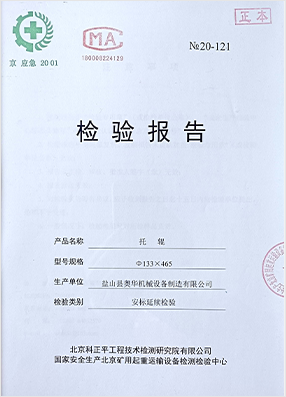 Afrikaans
Afrikaans  Albanian
Albanian  Amharic
Amharic  Arabic
Arabic  Armenian
Armenian  Azerbaijani
Azerbaijani  Basque
Basque  Belarusian
Belarusian  Bengali
Bengali  Bosnian
Bosnian  Bulgarian
Bulgarian  Catalan
Catalan  Cebuano
Cebuano  Corsican
Corsican  Croatian
Croatian  Czech
Czech  Danish
Danish  Dutch
Dutch  English
English  Esperanto
Esperanto  Estonian
Estonian  Finnish
Finnish  French
French  Frisian
Frisian  Galician
Galician  Georgian
Georgian  German
German  Greek
Greek  Gujarati
Gujarati  Haitian Creole
Haitian Creole  hausa
hausa  hawaiian
hawaiian  Hebrew
Hebrew  Hindi
Hindi  Miao
Miao  Hungarian
Hungarian  Icelandic
Icelandic  igbo
igbo  Indonesian
Indonesian  irish
irish  Italian
Italian  Japanese
Japanese  Javanese
Javanese  Kannada
Kannada  kazakh
kazakh  Khmer
Khmer  Rwandese
Rwandese  Korean
Korean  Kurdish
Kurdish  Kyrgyz
Kyrgyz  Lao
Lao  Latin
Latin  Latvian
Latvian  Lithuanian
Lithuanian  Luxembourgish
Luxembourgish  Macedonian
Macedonian  Malgashi
Malgashi  Malay
Malay  Malayalam
Malayalam  Maltese
Maltese  Maori
Maori  Marathi
Marathi  Mongolian
Mongolian  Myanmar
Myanmar  Nepali
Nepali  Norwegian
Norwegian  Norwegian
Norwegian  Occitan
Occitan  Pashto
Pashto  Persian
Persian  Polish
Polish  Portuguese
Portuguese  Punjabi
Punjabi  Romanian
Romanian  Russian
Russian  Samoan
Samoan  Scottish Gaelic
Scottish Gaelic  Serbian
Serbian  Sesotho
Sesotho  Shona
Shona  Sindhi
Sindhi  Sinhala
Sinhala  Slovak
Slovak  Slovenian
Slovenian  Somali
Somali  Spanish
Spanish  Sundanese
Sundanese  Swahili
Swahili  Swedish
Swedish  Tagalog
Tagalog  Tajik
Tajik  Tamil
Tamil  Tatar
Tatar  Telugu
Telugu  Thai
Thai  Turkish
Turkish  Turkmen
Turkmen  Ukrainian
Ukrainian  Urdu
Urdu  Uighur
Uighur  Uzbek
Uzbek  Vietnamese
Vietnamese  Welsh
Welsh  Bantu
Bantu  Yiddish
Yiddish  Yoruba
Yoruba  Zulu
Zulu Exploring the Functionality and Benefits of Spiral Return Idlers in Conveyor Systems
Understanding the Spiral Return Idler A Key Component in Conveyor Systems
In the realm of material handling and conveyor systems, the spiral return idler is a vital component that plays a crucial role in ensuring the efficient and smooth operation of the entire system. As industries increasingly rely on automated processes to enhance productivity, understanding the functionality and benefits of the spiral return idler becomes essential for engineers, operators, and maintenance personnel alike.
What is a Spiral Return Idler?
A spiral return idler is a specialized type of roller used in a conveyor configuration. Its primary purpose is to support the return belt of a conveyor system while also maintaining proper belt alignment. Unlike traditional idlers, which may consist of simple cylindrical rollers, the spiral return idler features a helical shape that helps to reduce belt wear and allows for a smoother material return. This design minimizes friction and keeps the belt centered, which is crucial in preventing misalignment and ensuring the longevity of the equipment.
Key Features and Benefits
1. Reduced Wear and Tear One of the most significant advantages of using a spiral return idler is its ability to minimize the wear and tear of the conveyor belt. The helical design distributes the weight of the material more evenly, reducing localized stress on the belt. This results in prolonged lifespan and reduced maintenance costs.
2. Improved Material Handling The spiral return idler facilitates a smoother return path for the conveyor belt, enhancing the overall material handling process. Materials can move more freely and consistently, decreasing the likelihood of blockages and jams that can lead to production delays.
spiral return idler

3. Versatility Spiral return idlers can be employed in various industries, from manufacturing to mining, and in different types of conveyor systems, including light-duty to heavy-duty applications. Their adaptability makes them an invaluable asset across many sectors.
4. Enhanced Alignment Misalignment issues can lead to significant operational challenges, including belt rejection and increased downtime. The spiral design aids in keeping the belt aligned even under dynamic loading conditions, thus ensuring a continuous and trouble-free operation.
5. Reduced Noise Levels The helix configuration of spiral return idlers can also contribute to noise reduction within the conveyor system. This is particularly important in environments where noise regulations are stringent or where a quieter workplace is desired.
Applications in Various Industries
In the mining industry, for example, the durability and robustness of spiral return idlers are paramount due to the heavy loads and harsh operating conditions. In manufacturing, they enable efficient handling of materials in assembly lines. Agriculture also benefits from these idlers, as they transport grains and other products seamlessly without compromising integrity.
Conclusion
Incorporating spiral return idlers into conveyor systems is a strategic decision that can yield numerous benefits, ranging from reduced maintenance costs to increased operational efficiency. As industries continue to evolve, understanding the components that contribute to their success, such as spiral return idlers, is crucial. For engineers and system designers, recognizing the importance of these idlers not only enhances the performance of conveyor systems but also ensures sustainable operations in an increasingly competitive market. Thus, the spiral return idler emerges not just as a simple mechanical component, but as an essential player in the complex dance of modern material handling.
-
Revolutionizing Conveyor Reliability with Advanced Rubber Lagging PulleysNewsJul.22,2025
-
Powering Precision and Durability with Expert Manufacturers of Conveyor ComponentsNewsJul.22,2025
-
Optimizing Conveyor Systems with Advanced Conveyor AccessoriesNewsJul.22,2025
-
Maximize Conveyor Efficiency with Quality Conveyor Idler PulleysNewsJul.22,2025
-
Future-Proof Your Conveyor System with High-Performance Polyurethane RollerNewsJul.22,2025
-
Driving Efficiency Forward with Quality Idlers and RollersNewsJul.22,2025





























